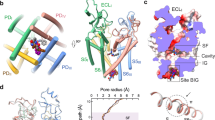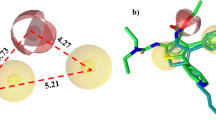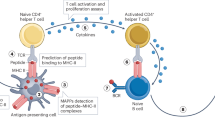Abstract
INVESTIGATIONS have demonstrated that the pharmacological effects of drugs such as digitalis1 and paraoxon2 can be altered by immunological means. To date, however, all reported attempts to antagonise immunologically the in vivo pharmacological effects of narcotic analgesics (such as morphine) have resulted only in mild attenuation or a partial delay in the onset of action3–5. To prevent immunologically the effect of a pharmacologically active molecule, sufficient amounts, of specific antibodies must be present so that less than a threshold dose of the free drug remains after combination with the antibodies. Such a condition would be maximised with a drug which can be rendered highly immunogenic and which can exert its pharmacological effect at very low concentrations. We report that it is feasible to prevent the pharmacological effects of the potent narcotic analgesic fentanyl in experimental animals by both passive and active immunisation.
This is a preview of subscription content, access via your institution
Access options
Subscribe to this journal
Receive 51 print issues and online access
$199.00 per year
only $3.90 per issue
Buy this article
- Purchase on SpringerLink
- Instant access to full article PDF
Prices may be subject to local taxes which are calculated during checkout
Similar content being viewed by others
References
Butler, V. P., Jr, Watson, J. F., Schmidt, D. H., Gardner, J. D., Mandel, W. J., and Skeleton, C. L., Pharmac. Rev., 25, 239 (1973).
Sternberger, L. A., Cuculis, J. J., Meyer, H. G., Lenz, D. E., and Kavanagh, W. G., Fedn Proc., 33, 728 (1974).
Berkowitz, B., and Spector, S., Science, 179, 1290 (1972).
Nakamura, J., Leung, C. Y., Miller, C., Benjamini, E., and Winters, W. D., Proc. west. Pharmac. Soc., 16, 29 (1973).
Wainer, B. H., Fitch, F. W., Rothberg, R. M., and Schuster, C. R., Nature, 241, 537 (1973).
Henderson, G. L., Frinke, J., Leung, C. Y., Torten, M., and Benjamini, E., Proc. west. Pharmac. Soc., 17, 64 (1974).
Henderson, G. L., Frincke, J., Leung, C. Y., Torten, M., and Benjamini, E., J. Pharmac. exp. Ther. (in the press).
Garber, E. D., and Hauth, F. C., J. Hered., 41, 122 (1950).
Eddy, N. B., and Leimbach, D. G., J. Pharmac. exp. Ther., 107, 385 (1953).
Farr, R. S., J. Infect. Dis., 103, 239 (1958).
Author information
Authors and Affiliations
Rights and permissions
About this article
Cite this article
TORTEN, M., MILLER, C., EISELE, J. et al. Prevention of the effects of fentanyl by immunological means. Nature 253, 565–566 (1975). https://doi.org/10.1038/253565a0
Received:
Revised:
Issue date:
DOI: https://doi.org/10.1038/253565a0



